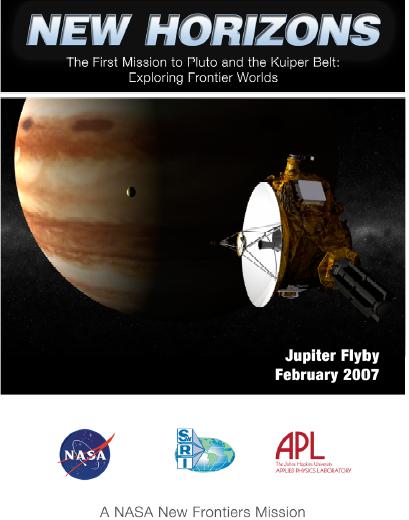The encounter, a total of one year after launch (as opposed to other missions that reached Tedek within a few years) was intended to utilize Tedek's gravitational force for acceleration, and on this occasion also to photograph Tedek in the huge seam between the missions to it

A total of one year after being launched on the first mission to Pluto and the Kuiper belt, NASA's New Horizons spacecraft is knocking on the doors of the largest planet in the solar system - for a meeting with it that will allow it to accelerate even more towards its journey towards the unknown worlds at the edge of the solar system.
As the fastest spacecraft ever launched, New Horizons will make its closest approach to Jupiter on February 28 and come within 2.3 million kilometers of Jupiter's center. Jupiter's gravity will accelerate New Horizons away from the Sun and give it a speed increase of 1,500 km/h - about half the speed of the space shuttle in orbit - and bring it to a speed of about 80 km/h and direct it to pass through the Pluto system in July 2015.
The spacecraft's operator team will give it an ultimate test flight - it will use this close pass to test the seven scientific instruments to document the encounter. Over 700 observations of Jupiter and its four largest moons are planned for her between the months of January and June. including the turbulent and swirling atmosphere, as well as the dynamic magnetic shell (the magnetosphere); The most comprehensive study to date of the thin ring system; Mapping the composition and topography of the large moons Io, Europa, Ganymede and Callisto; And you will watch the unprecedented sight of the volcanic activity on the island.
The flight plan also includes the first journey down the Great Tail of the magnetosphere, a wide stream of particles that extends tens of millions of kilometers beyond the planet, and will also make the first close-up observation of the "Little Red Spot", a tail in the process of developing south of Jupiter's famous Great Red Spot.
"Our first priority is to safely transport the spacecraft via gravity assistance on its way to Pluto." says the lead researcher in the New Horizons project, Dr. Alan Stern, from the Southwest Research Institute in Colorado. "But we will also take advantage of the calculated opportunity we have to perform a real-world stress test to test the processes and techniques of the system designed for Pluto, as well as to collect important scientific data."
Most of the images will be transmitted from the spacecraft to Earth after it reaches its peak approach to Jupiter. This is because its resources are limited and the scientists prefer that it wait, store the data in its memory and transmit it later.
As mentioned, the meeting takes place only 13 months after the launch, and the spacecraft is therefore faster than the seven spacecraft that reached Jupiter before it. Pioneer 10 and 11, Voyager 1 and 2, Ulysses and Cassini used Jupiter's gravity to reach other destinations. The Galileo spacecraft orbited Jupiter in 1995-2003.
New Horizons will also provide the most comprehensive close-up photographs of Jupiter since Galileo, and the last until the Juno mission arrives there in 2016. "The Jupiter system is extremely dynamic," says New Horizons Jupiter rendezvous team leader Dr. Jeff Moore of NASA's Ames Research Center in California. From the constant changes in the magnetosphere and atmosphere to developments on the surface of moons such as Io, you can get new images every time you get there."
New Horizons is the first spacecraft in NASA's New Frontiers program to build medium-sized research spacecraft.

3 תגובות
I was just about to post the exact same question here then you beat me to it. Abby, could you explain this weird acceleration thing once and for all? This is mentioned in many articles here and the matter is completely unclear to many people.
It is true that when the spacecraft approaches Jupiter it pulls it and accelerates its speed, but as soon as it passes by it will start pulling it in the opposite direction, meaning it will slow it down until its speed returns to its original speed, isn't that right? If you could please explain this important point once for all those wondering, thanks in advance.
The added speed is "stolen" from the energy of the planet's rotation around the sun. This maneuver is called Gravitational Slingshot
There is an explanation on Wikipedia:
tp://en.wikipedia.org/wiki/Gravitational_slingshot
Can someone explain once and for all how this thing with using gravity to accelerate works? As far as I can tell, you can use a star's gravity to change direction, but actually speed up? After all, any acceleration you get when you get closer, you will have to "pay" back when you move away, right?
Thanks!